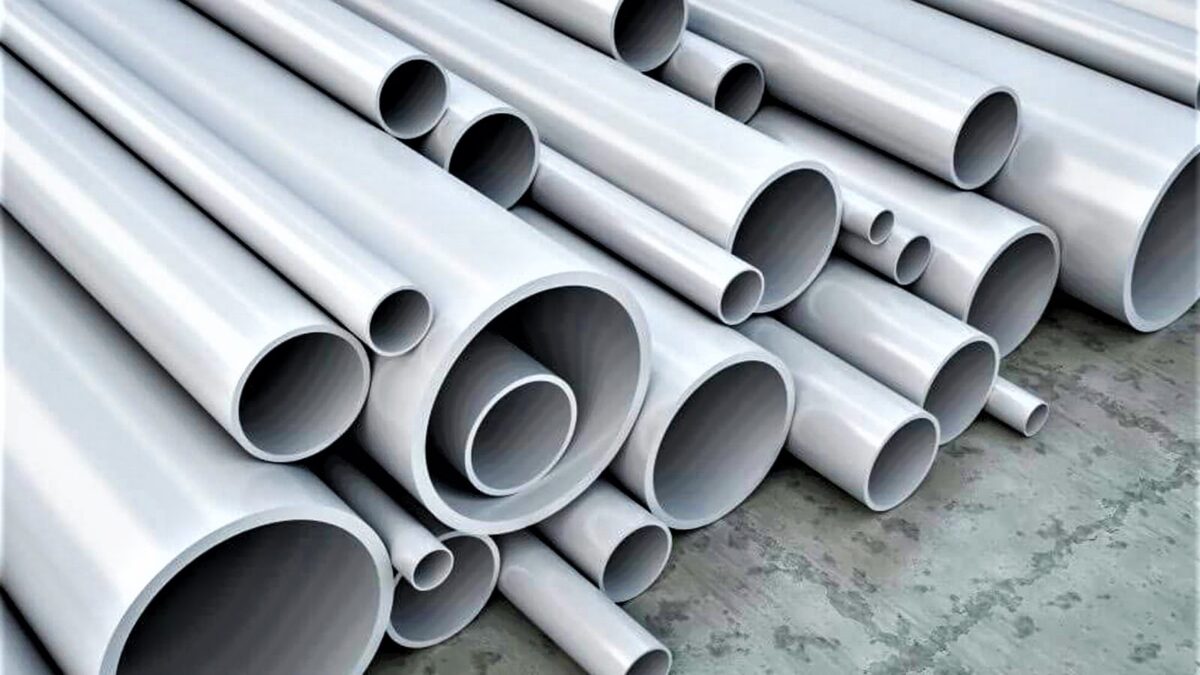Plastic pipework is used to transport drinking water, contaminated water, chemicals, heating and cooling fluids, foods, ultra-pure liquids, gases, compressors, agriculture, plastic pressure pipe systems, and vacuum system applications.
Plastics are a broad category of semi-synthetic or synthetic materials that contain polymers as a primary component. Plastics can be moulded, stretched, or pressed into solid objects of diverse shapes due to their fluidity.
Some basic plastic pipe types are –
- Barrier pipe: Pipe with a flexible metallic layer in the centre of three linked layers. When laid in ground contaminated by prior use, a barrier pipe is used to provide additional protection for the contents running through the pipe (especially drinking water) from harsh chemicals or other contamination.
- Structured Wall pipes: These are the pipes that have been optimised in material consumption to meet physical, mechanical and performance requirements. Structured Wall Pipes are piping system tailor-made solutions for a wide range of applications, designed in most cases in collaboration with users.
- Solid Wall pipe: These are pipes extruded from a single layer of a homogeneous thermoplastic matrix and ready to be used in a pipeline
PVC pipes
PVC is popular worldwide since it has multiple applications and is used to manufacture many things. PVC is created by polymerising the vinyl chloride ingredient. The joining of monomer molecules to produce polymer chains is known as polymerisation. PVC manufacture will be practically complete once the polymerisation process is completed. However, after polymerisation, the PVC goes through an emulsion phase in which it obtains its plastic form.
PVC is available in a wide range of colours and variations. PVC is offered in two varieties: rigid and flexible. The rigid version of PVC will have additional applications, such as pipeline construction, electrical insulation, etc.
Common differences between Plastic and PVC materials for pipes
- Meaning: PVC is polyvinyl chloride introduced in 1872 by German chemist Eugen whereas, plastic is a group of semi-synthetic or synthetic materials discovered in 1907.
- Electric properties: The insulation properties of PVC are better than plastic.
- Hardness: PVC is stronger and harder and more durable than plastic due to its mechanical strength.
- Chemical resistance: PVC is more resistant to chemicals such as acids, fluids, etc. On the other hand, Plastic comparatively is less resistant to chemicals.
Types of PVC water pipes and their benefits:
- UPVC: UPVC pipes refer to unplasticised PVC, which indicates no plasticiser has been applied to the PVC combination. They are a safe option for transporting drinking water because they are light, easy to handle, and inexpensive. Technical qualities include good mechanical performance, high durability (at least 100 years for subterranean pipes), high chemical resistance and resistance to UV exposure. Furthermore, PVC-U pipes have a good climatic profile and are completely recyclable.
- C-PVC: C-PVC is an abbreviation for chlorinated PVC. Used for drinkable water and have strong corrosion resistance, durability, and impact resistance. However, with its higher chlorine content than conventional PVC-U, pipes and fittings constructed of C-PVC can endure a wider range of temperatures. This has made C-PVC a common choice for water piping systems in a household as well as commercial construction. C-PVC is also far more ductile than PVC-U. C-PVC pipes and fittings are completely recyclable.
- PVC-O: Molecularly aligned PVC (PVC-O) is produced by converting the amorphous structure of PVC (PVC-U) that is unplasticised into several layers. Corrosion resistance, water quality preservation, cost-efficiency and recyclability, and an unrivalled blend of stiffness and flexibility are notably favourable for crack propagation, hydraulic capacity, flexibility and impact and fatigue resistance. This makes PVC-O a perfect choice for drinking water pipes.
So, based on these points, you can fairly make out which type of pipe is suitable for your household needs.


